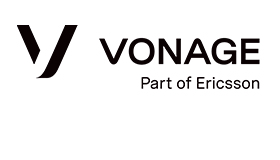Vonage discuss how you can improve contact centre customer satisfaction (CSAT) with unified communications.
Today’s enterprises can take their customer experience (CX) performance to a new level by integrating a unified communications and contact centre system. Yet many companies rely on disparate forms of communication, from email, phone, and instant messaging to video-conferences and third-party messaging apps.
In place of a motley crew of correspondence mediums, an integrated communications system streamlines all company communication via a single consolidated service or application.
For organizations with a contact centre, the benefits of unifying communication are particularly impactful. It enables companies to consolidate and optimize correspondence processes across the entire business and eliminate the common problems that contact centres face with legacy systems.
Beyond upgrading the daily workflow for contact centre agents and positioning them to deliver an improved CX, using an integrated communications platform provides subject-matter experts with important benefits, too.
Key Features of an Integrated Communications System
According to the Walker “Customers 2020” report, customers are increasing their expectations. They want to do business with companies that personalize and simplify their experiences and resolve issues quickly.
As contact centres are one of the most important customer-facing units within an organization, the case for optimizing their CX performance is clear.
An integrated unified communications and contact centre platform provides a range of advanced features that power unprecedented CX performance.
Presence Availability
Contact centre agents can use real-time presence information to view colleagues’ availability across the entire company. This means that when agents need to consult with a specific department or subject-matter expert to resolve a customer query, they no longer have to place customers on hold while they try, often in vain, to contact the right person. They’re able to instantly identify who’s available at any given time.
For the subject-matter experts within an organization, it means that they can help agents solve customers’ queries when they’re needed, according to their availability.
Common Controls
Call centre agents can interact with back-office users more easily with call controls that are common to both sets of roles within an organization.
Common call controls mean that agents and subject-matter experts alike use the exact same system, creating consistency, efficiency, and familiarity between different departments and divisions.
Single Sign-On
With legacy systems, employees have typically had to remember numerous sets of login credentials and switch between different tools throughout the day.
A single sign-on provides one set of credentials for one consolidated system, along with a common protocol for access and identity management.
Single Intuitive Interface
A best-of-breed system brings the contact centre, unified communications, CRM, and other integrations together into one intuitive interface. This centralizes operational control and makes workflow management faster and easier to keep track of.
A Common Directory
This feature can be a revelation for contact centre agents, acting as a go-to resource to identify the right subject-matter expert from anywhere within the organization to help address a calling customer’s query.
Combined with presence availability viewing, agents can route calls to the correct department with greater accuracy and lower customer frustration as a result. And subject-matter experts receive mistakenly routed calls less often.
The Benefits of an Integrated Unified Communications and Contact Centre Platform
The benefits of integrating a unified communications and contact centre platform can drive a number of key metrics.
1. Upgrade Communication With Customers
When the contact centre and the rest of the organization are all on the same communications platform, every employee within the business can be available for consultation to help the customer.
For example, an agent can check other agents’ availability to chat with a subject-matter expert, bringing in the specialist employee with the right skills and knowledge to most effectively solve a customer’s issue. The company pivots as a whole in the interests of optimized CX.
2. Improve Internal Collaboration
With legacy systems, internal collaboration between agents and subject-matter experts has produced limited results.
Strong collaboration has traditionally been challenging for companies to achieve, as agents have had difficulty understanding which department to route calls to at times or identifying which colleague has the requisite knowledge or skills to solve a customer problem.
Collaboration hurdles can impact agent morale, too, and thus affect job performance and labour turnover.
An integrated unified communications and contact centre system tackles these legacy issues head on and replaces them with successful collaboration between the contact centre and the rest of the business.
3. Maximize Productivity
Unified communications and contact centre technology is designed to eliminate efficiency bottlenecks at all steps of the customer experience.
A centralized system of correspondence that enables agents to identify the right subject-matter expert to address a customer request and to see when they’re available improves productivity.
Moreover, by using a single sign-on and common controls between the back office and the contact centre, organizations benefit from increased efficiency.
Achieving a New Level of Customer Experience Performance
An integrated experience across the contact centre helps enterprises optimize interactions with customers and streamline internal procedures both within the call centre and across the rest of the organization.
Ultimately, it positions companies to generate improved customer experience KPIs and reinforce their competitiveness and reputation as customer-centric brands.
For more information about Vonage - visit the Vonage Website
Call Centre Helper is not responsible for the content of these guest blog posts. The opinions expressed in this article are those of the author, and do not necessarily reflect those of Call Centre Helper.
Author: Vonage
Published On: 13th Nov 2020 - Last modified: 30th Nov 2020
Read more about - Guest Blogs, Vonage






 Vonage is redefining business communications, helping enterprises use fully-integrated unified communications, contact centre and programmable communications solutions via APIs.
Vonage is redefining business communications, helping enterprises use fully-integrated unified communications, contact centre and programmable communications solutions via APIs. 









